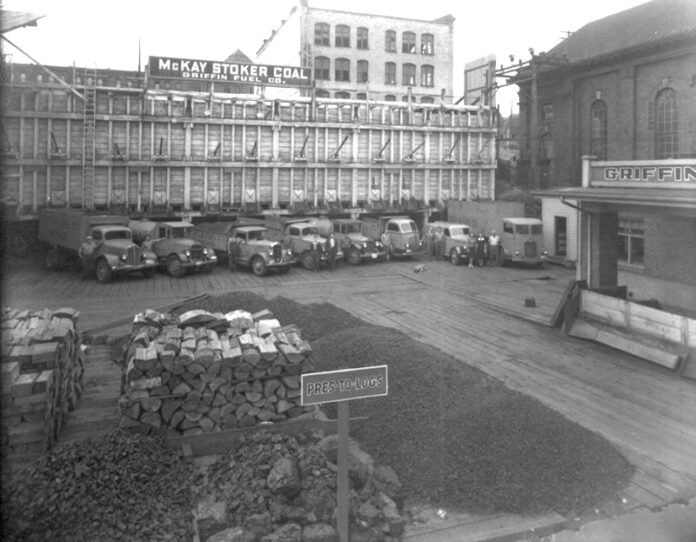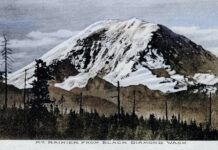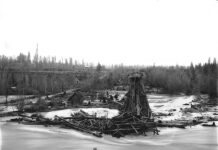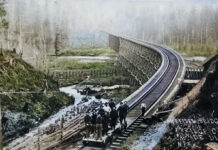Prior to Thomas Edison’s development of the electric heater in the 1880s, almost all homes were heated by wood, coal, peat, or dried animal dung. According to the U.S. Census, by 1940, 75% of homes still used wood or coal as their primary heating fuel. Today in America, about 48% of homes use natural gas, 40% electricity, 10% diesel oil or propane, and 2% other including coal and wood, plus 0.2% utilizing solar heat.
When this photo of the Griffin Fuel Company sales yard was taken on Aug. 21, 1940, the company was a leading distributor of heating fuels. Located at 1910 Commerce Street in Tacoma, Griffin offered a wide variety of fuel choices including three varieties of coal – stoker nut, or lump; plus firewood and Pres-to-Logs, often called Presto-logs. The coal bins, loading bays, delivery trucks, and employees had grown considerably since Fred L. Griffin started his transfer business in 1889 with one horse, one wagon, and one man on his payroll.
The bank of storage bunkers below the McKay Stoker Coal sign were typically filled from above by a crane loading out of railcars. Railroad tracks once crisscrossed this area of Tacoma near Union Station back when trains still delivered most bulk products. McKay was a well-known seam of coal which powered the growth of Black Diamond, Franklin, and later, Ravensdale. Today, the former Griffin Fuel yard is part of an area dominated by Tacoma campus of the University of Washington. This photo #A10149-2 by Richards Studio comes courtesy of the Northwest Room at Tacoma Public Library.







